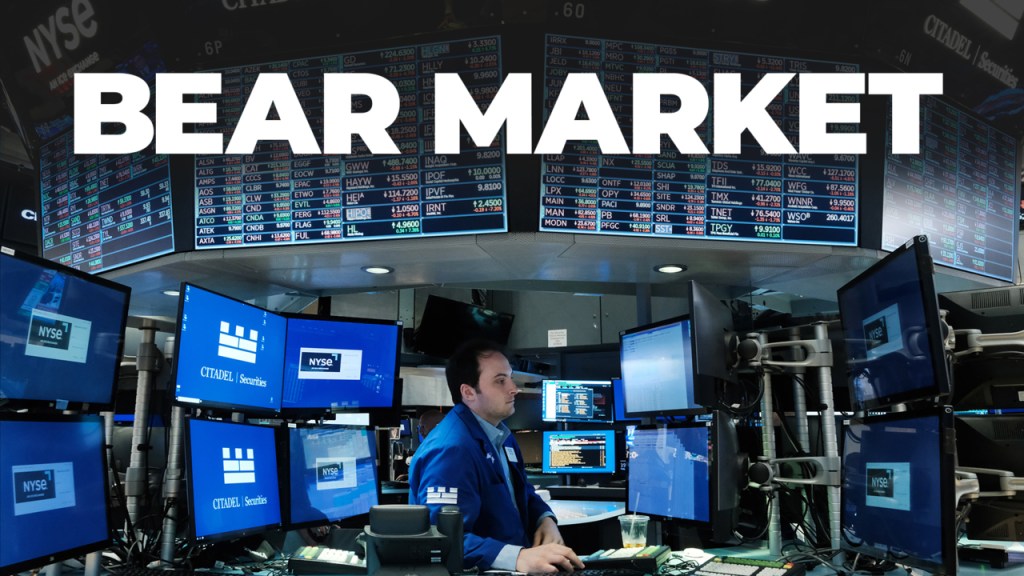The Dow Jones Industrial Average tumbled into bear market territory mid-trading day Friday, at one point down roughly 600 points. At its lowest point, the stock index fell 20% from its recent high before closing down more than 19%, avoiding a bear market close.
Stocks have taken a beating this week amid rising interest rates, persistent inflation and fears of a global recession. The S&P 500 and NASDAQ are already in a bear market. The S&P 500 hit the milestone in June while the tech-heavy NASDAQ entered bear market territory in March.
All three indexes fell more than 2% by afternoon trading as safe havens like the dollar surged, along with treasury yields.
This week, the Federal Reserve announced a third consecutive rate hike of 75 basis points, roiling markets. The board also downgraded economic growth forecasts to 0.2% for the year, down from 1.7% real GDP previously projected in June. The U.S. has so far seen two quarters of negative growth in GDP so far, prompting fears of a recession. Recessions are officially declared by the National Bureau of Economic Research, which has yet to make a call on the economic conditions this year.
On Wednesday, Fed Chair Jerome Powell signaled more rate hikes ahead in an effort to cool inflation, which came in hotter than expected in August at 8.3%.
“Today, we’ve just moved probably into the very lowest level of what might be restrictive,” Powell said of the benchmark rate. “And certainly, in my view and the view of the committee, there’s a ways to go.”
Raising the federal funds rate drives up interest rates in nearly every other category, from mortgages to credit cards. The average 30-year fixed mortgage reached 6.29% this week, according to Freddie Mac. That’s the highest average rate since October 2008.
Along with raising the rate, the Fed is also in the process of unloading its bloated balance sheet, called quantitative tightening. Both tools are attempts at pulling liquidity out of the market, but even Powell called using this method to cool inflation “uncertain.”
